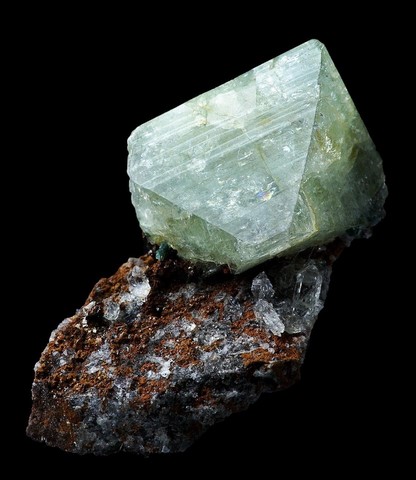WARDITE
Class : Phosphates, arsenates, vanadates
Subclass : Hydrated phosphates
Crystal system : Tetragonal
Chemistry : NaAl3(PO4)2(OH)4 . 2H2O
Rarity : Uncommon
Wardite is a hydrated phosphate present in phosphate nodules (variscite) of low temperature ; it is present, but not common in complex pegmatites. It owes its name to Henry Augustus Ward (1834-1906) collector and professor of Natural Sciences at the University of Rochester (New York, USA). Wardite forms bipyramidal pseudo-octahedral crystals, inlays and aggregates, or fibrous aggregates and fibro-radiated spherulites. It is a colorless mineral, white or pale green, sometimes light yellow or pale brown. Mixed with variscite, it is a mineral that can be used as an ornamental stone or for jewelery (cabochons). It is a mineral little known by collectors.
Wardite in the World
Wardite in France
In France the wardite is known as a product of alteration of amblygonite at Montebras in the Creuse.
Twinning
Wardite has no twinned crystals known.
Fakes and scams
No scam known for this mineral.
Hardness : 5
Density : 2.81 to 2.87
Fracture : Irregular
Trace : White
TP : Translucent to transparent
RI : 1.586 to 1.604
Birefringence : 0,009
Optical character : Uniaxial +
Pleochroism : Very weak
Fluorescence : None
Solubility : All acids
Magnetism : None
Radioactivity : None


